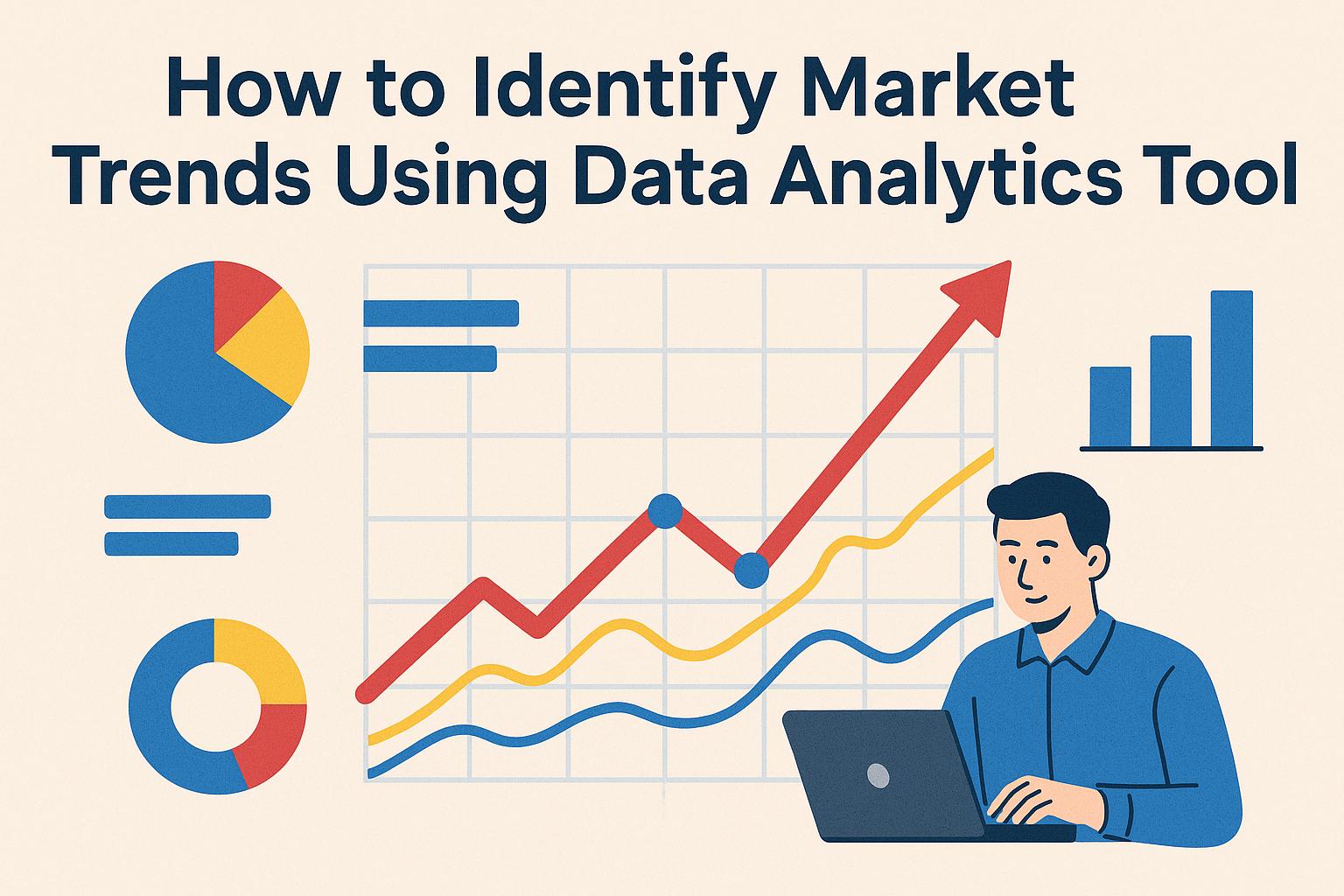
Understanding Market Trends through Data Analytics
In the ever-evolving landscape of the market, identifying trends is crucial for businesses to stay competitive and make informed decisions. Data analytics tools are instrumental in this process, providing the insights needed to comprehend these trends effectively. This article delves into how these tools can be leveraged to identify market trends.
The Role of Data Analytics in Trend Identification
Data analytics involves examining vast amounts of data to uncover patterns, correlations, and trends. By utilizing sophisticated algorithms and statistical techniques, businesses can filter through noise to identify meaningful information. This capability is essential for predicting future market behaviors and making strategic decisions. Understanding the role of data analytics in trend identification requires a comprehensive overview of its functionalities and applications.
Firstly, data analytics provides a structured approach to understanding consumer behavior, enabling businesses to predict future actions based on past data. This predictive capability is crucial for strategizing marketing campaigns, inventory management, and product development. Additionally, data analytics aids in identifying emerging market trends. By analyzing data from various sources, including social media, sales figures, and consumer feedback, businesses can gain insights into changing consumer preferences and rising demands.
Key Data Analytics Tools
Several data analytics tools are particularly useful for identifying market trends. These tools help in collecting, processing, and analyzing data efficiently. Understanding the functionalities and applications of these tools can significantly enhance a business’s ability to identify and act upon market trends effectively.
Google Analytics, for instance, is often used for tracking website performance. It provides insights into consumer behavior and preferences by analyzing metrics such as page views, bounce rates, and conversion rates. This tool is especially valuable for businesses with a significant online presence, offering insights into customer interactions with their digital platforms.
Tableau is renowned for its powerful visualization capabilities. It assists in uncovering hidden trends within complex data sets by converting raw data into intuitive and interactive dashboards. This visualization aspect is crucial for identifying patterns that may not be immediately apparent in raw data formats.
Programming languages like R and Python offer extensive libraries for statistical analysis and visualization. These languages enable businesses to perform detailed analyses and create customized data models. R, for example, is known for its strong statistical capabilities, while Python offers versatility and ease of integration with other platforms and tools.
Steps to Identify Market Trends
While data analytics tools are powerful, understanding how to use them effectively is key. The following steps outline the process of identifying market trends using these tools.
1. Data Collection
The first step is gathering data from relevant sources. This could include sales data, customer feedback, social media metrics, and market reports. Ensuring data quality is imperative for accurate analysis. Reliable and high-quality data forms the foundation of effective analytics, making the data collection phase critical for success.
2. Data Cleaning and Preparation
Raw data often contains errors or inconsistencies. Cleaning the data involves removing duplicates, correcting errors, and formatting it properly. This preparation stage is critical for producing reliable results. Properly cleaned data ensures that subsequent analyses yield insights that are both accurate and actionable.
3. Data Analysis
Once the data is prepared, the next step involves applying analytical methods. This could involve statistical analysis, machine learning algorithms, or data mining techniques to uncover patterns. Understanding these patterns helps in predicting future trends. The choice of analytical method depends on the type of data and the desired outcomes, making flexibility and adaptability crucial.
4. Data Visualization
Presenting data in visual formats makes it easier to comprehend and communicate findings. Tools like Tableau and Power BI are excellent for creating dashboards and visualizing data trends effectively. Visualizations play a key role in translating complex data insights into an easily understandable format, fostering better decision-making.
5. Interpretation and Action
After identifying trends, it’s essential to interpret the results accurately. This involves understanding the implications of the trends and how they can influence business strategy. Taking informed actions based on these insights is the final step in leveraging data analytics for market advantage. This stage involves aligning identified trends with business objectives to ensure strategies are both innovative and practical.
Conclusion
In conclusion, data analytics tools play a pivotal role in identifying and understanding market trends. By effectively collecting, processing, analyzing, and visualizing data, businesses can gain a significant competitive edge. Investing in the right tools and skills is key to unlocking the potential of data analytics in trend identification.
For organizations seeking to harness the full potential of data analytics, a structured approach involves integrating data analytics into the core of business operations. By fostering a data-driven culture, companies can improve decision-making and strategic planning. Continuous learning and adaptation to new tools and methodologies also contribute to sustained competitive advantage in a dynamic market environment.
Furthermore, for those looking to deepen their understanding, exploring platforms offering courses and tutorials in data analytics can be beneficial. These educational resources can bolster your understanding and application of data analytics in real-world scenarios, enhancing your ability to interpret trends and make informed business decisions.
Overall, embracing data analytics in identifying market trends not only enhances operational efficiency but also equips businesses with the insights needed to navigate the complexities of modern markets. Through a combination of technological tools and strategic planning, companies can successfully respond to the ever-changing demands of the market.
